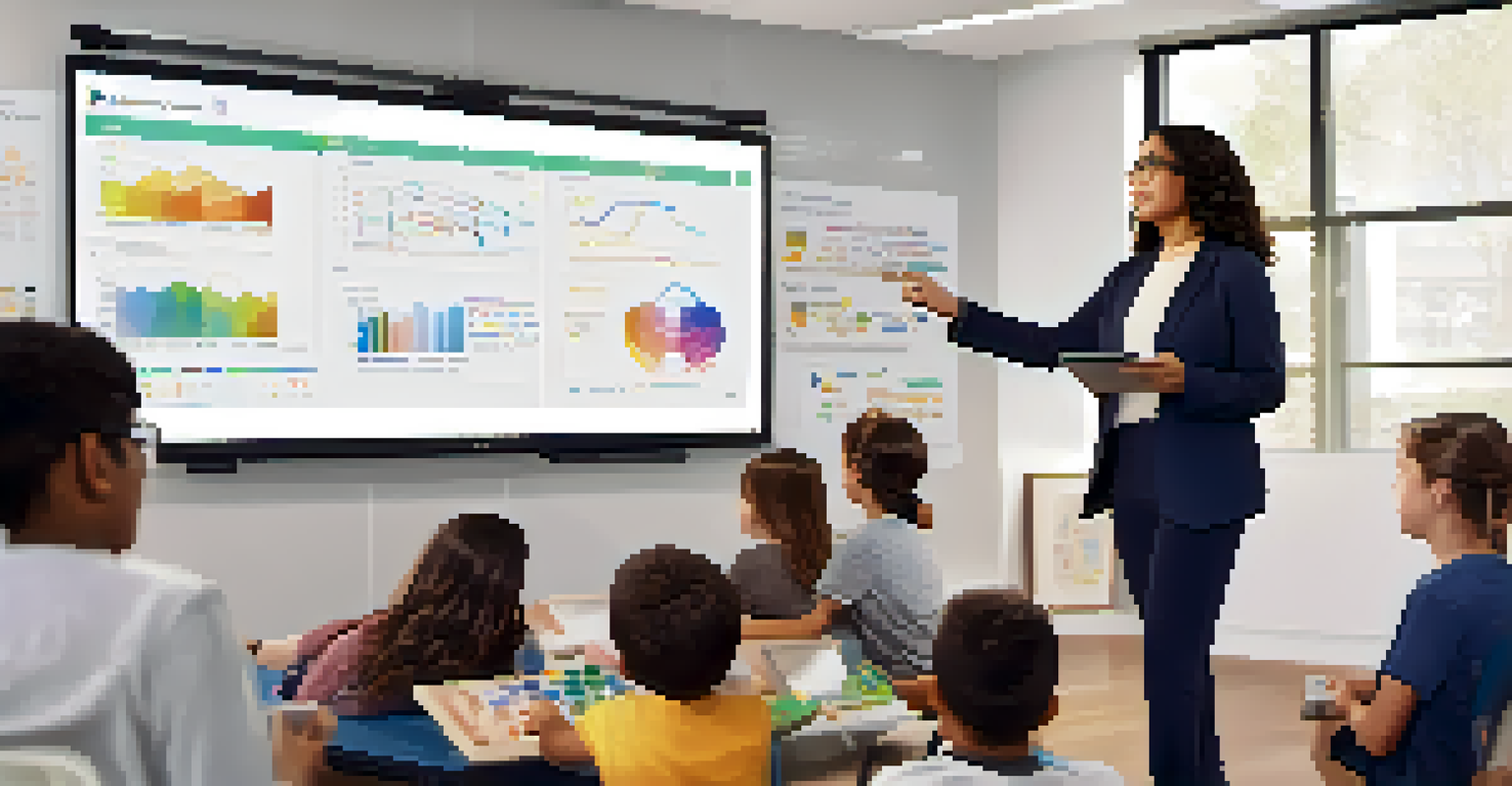The Influence of Learning Styles on Digital Pedagogy

Defining Learning Styles: A Brief Overview
Learning styles refer to the various ways individuals prefer to learn. This concept suggests that people absorb and process information differently, which can significantly affect their educational experience. For instance, some learners thrive through visual aids, while others might find auditory explanations more beneficial. Understanding these styles can help educators tailor their approaches for maximum engagement and effectiveness.
The greatest gift of education is the ability to think for yourself.
In the realm of education, the most recognized models include VARK (Visual, Auditory, Reading/Writing, Kinesthetic) and Gardner's Multiple Intelligences. These frameworks break down learning preferences into categories, providing a clearer picture of the diverse needs of students. By identifying these styles, educators can better support their learners in achieving academic success.
However, it's essential to note that while learning styles can guide teaching strategies, they shouldn't box learners into rigid categories. Each student is unique, often incorporating elements from multiple styles. Recognizing this fluidity can foster a more inclusive and adaptable learning environment.
The Rise of Digital Pedagogy in Education
Digital pedagogy refers to the integration of digital tools and technologies into teaching practices. As online learning becomes increasingly prevalent, understanding how to effectively utilize these tools is crucial for educators. This shift not only enhances accessibility but also offers innovative ways to engage students, making learning more interactive and enjoyable.

With platforms like Zoom, Google Classroom, and various Learning Management Systems (LMS), educators have a wealth of resources at their fingertips. These tools allow for varied instructional methods, such as video presentations, interactive quizzes, and discussion forums. Such diversity enables teachers to cater to different learning styles while maintaining student interest and participation.
Understanding Learning Styles Matters
Recognizing diverse learning styles helps educators tailor their teaching methods for improved student engagement and success.
Moreover, digital pedagogy encourages collaboration among students. Tools like online discussion boards and group projects enable learners to engage with their peers, share insights, and learn from one another. This collaborative aspect can enhance understanding and retention, making digital environments rich learning hubs.
How Learning Styles Influence Digital Learning Experiences
The intersection of learning styles and digital pedagogy can significantly impact student outcomes. For instance, visual learners might benefit from infographics and videos, while auditory learners may excel in podcasts and discussions. By aligning digital content with these styles, educators can create a more personalized and effective learning experience.
Education is not the filling of a pail, but the lighting of a fire.
Furthermore, understanding learning preferences can aid in the design of online courses. For example, incorporating interactive elements like quizzes or simulations can engage kinesthetic learners who thrive on hands-on experiences. This approach not only caters to diverse needs but also enhances overall engagement and motivation.
Ultimately, recognizing and adapting to different learning styles in digital pedagogy can lead to improved retention and satisfaction among students. By offering a variety of multimedia resources and interactive activities, educators can create a more dynamic and responsive learning environment that benefits all learners.
Challenges in Addressing Learning Styles Online
Despite the benefits, addressing learning styles in digital pedagogy isn't without challenges. One major hurdle is the misconception that learners fit neatly into specific categories. In reality, most students exhibit a blend of styles, making it difficult for educators to tailor their approaches effectively.
Another challenge is the potential for oversimplification. While it’s helpful to consider learning styles, focusing too heavily on them might lead to neglecting other crucial factors, such as motivation, prior knowledge, and individual interests. A balanced approach that considers these aspects alongside learning styles is vital for successful teaching.
Digital Tools Enhance Learning
Integrating digital technologies into pedagogy allows for innovative teaching approaches that cater to various learning preferences.
Additionally, educators may face limitations in available technology or resources. Not all platforms support diverse multimedia content, which can hinder the ability to cater to different preferences. However, with creativity and resourcefulness, teachers can often find ways to adapt and innovate within their digital environments.
Strategies for Integrating Learning Styles in Digital Teaching
To effectively integrate learning styles into digital pedagogy, educators can employ a variety of strategies. First, using a blended approach that combines synchronous (live) and asynchronous (on-demand) learning can cater to diverse preferences. For instance, offering live discussions alongside recorded lectures provides options for both auditory and visual learners.
Incorporating multimedia resources is also key. Educators can enhance their online courses with videos, podcasts, articles, and interactive elements, allowing students to engage with content in their preferred style. This not only enriches the learning experience but also encourages students to explore different formats.
Lastly, ongoing assessment and feedback are crucial. By regularly checking in with students about their learning preferences and experiences, educators can adapt their strategies in real-time. This responsive approach fosters a supportive learning environment where all students feel valued and understood.
The Role of Educators in Facilitating Diverse Learning Styles
Educators play a pivotal role in recognizing and accommodating diverse learning styles within digital pedagogy. Their awareness and understanding of these differences can create a more inclusive classroom environment. By actively engaging with learners and encouraging feedback, teachers can better identify individual needs and preferences.
Furthermore, educators can model adaptive learning themselves. By demonstrating flexibility in their teaching methods and being open to trying new digital tools, they inspire students to embrace their unique learning styles. This approach not only empowers learners but also fosters a culture of exploration and experimentation.
Challenges in Online Learning Styles
Addressing learning styles in digital education can be complex due to misconceptions and technological limitations.
Ultimately, the goal is to create a learning community where every student feels empowered to succeed. By championing diverse learning styles, educators can help students thrive in a digital landscape, ensuring that all voices are heard and valued.
Future Trends: Evolving Learning Styles and Digital Pedagogy
As technology continues to advance, the landscape of digital pedagogy and learning styles will inevitably evolve. Emerging trends like artificial intelligence and personalized learning platforms are already reshaping how students engage with content. These innovations have the potential to provide customized learning experiences that adapt in real-time to individual preferences.
Moreover, the rise of gamification and virtual reality offers exciting opportunities to cater to diverse learning styles. These technologies create immersive learning environments that can engage visual, auditory, and kinesthetic learners alike. By tapping into the motivational aspects of gaming and simulation, educators can create dynamic experiences that resonate with students.

Looking ahead, the challenge will be to ensure that these advancements remain inclusive and accessible. As we embrace new technologies, it's crucial to consider the diverse needs of all learners, ensuring that no one is left behind in this digital transformation. By prioritizing inclusivity, we can create a future where every student can thrive.